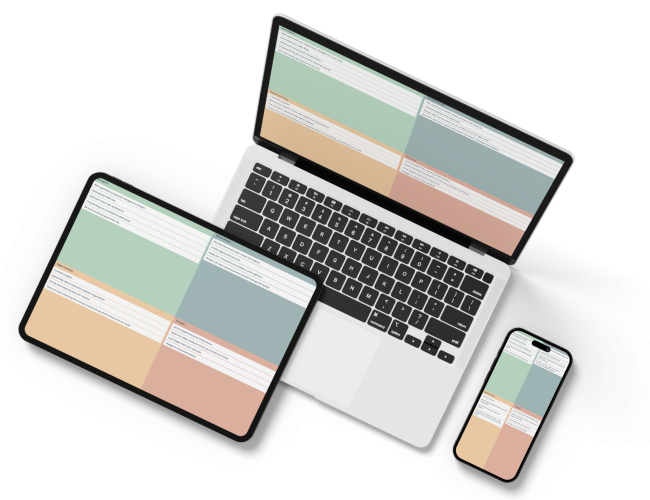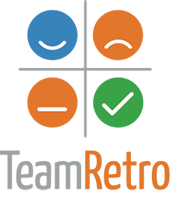
What is an ESVP?
ESVP is an exercise created by Esther Derby and Diana Larsen. Its goal is to help set the stage for a retrospective.
The ESVP was designed to engage and focus on those involved in the retrospective. At the same time, it gained insight into the participants’ attitudes towards the agile retrospective meeting itself.
While it’s still a popular way to kick off a retrospective, ESVPs are now used more widely. They can be icebreakers used to warm up any type of meeting or collaborative session. They can also be used at any point during a session as a temperature check.
ESVP stands for ‘Explorers, Shoppers, Vacationers and Prisoners’. Participants are invited to indicate the persona with whom they most relate at that point in time.
An ESVP focuses on four areas:
- Explorer – Will dive in and discover new things.
- Shopper – Will see what can be procured.
- Vacationer – Will relax and switch off.
- Prisoner – Does not want to be there.
Terms that are used by some groups may not be used by others. That’s why all of GroupMap’s templates are customisable. You could, for example, change ‘Vacationer’ to ‘Observer’ if you feel that word better suits your group.
Why Do an ESVP?
Using an ESVP at the start of your meeting can give everyone insight into the current motivations of the group. This means you’ll get more out of your meeting because you can see the attitudes and expectations of the people there. An ESVP check in exercise helps to create tiny yet powerful threads of connection between meeting participants. These connections help sow the seeds of collaboration.
Setting the stage with an ESVP can also help a facilitator gauge the attitudes of the people in the room. This lets the facilitator shape their next steps and helps everyone make the most of their meeting time.
You can use it to:
- Softly launch your meeting
- Easily gauge the ‘vibe’ of the group
- Decide on how you want to approach the retrospective meeting
Who Should Use an ESVP?
The ESVP is an insightful tool and can be used by:
- Scrum Masters
- Iteration Managers
- Coordinators
- Team Leaders
- Teachers
- Trainers
- Facilitators
In a nutshell, people who are working with groups in order to deliver outcomes would benefit from adding an EVSP to their toolkit.
Related Templates
Tips for Effective Facilitation of ESVP
- Make it anonymous. This will support psychological safety and reduce the influence of groupthink.
- Explain why you’re running it. This will increase the likelihood of buy-in
- Keep it short. It might be tempting to drill down into responses, but don’t. This will only distract from the meeting and may result in more ‘Prisoners’.
ESVP Template
Explorer
Will dive in and discover new things.
- Eager to examine possibilities
- Positive attitude and high energy
- Motivated by the chance to learn and open to where that may head
Shopper
Will see what can be procured.
- Happy to consider the possibilities
- Reasonably positive attitude and medium energy
- Motivated by chance of finding something of benefit
Vacationer
Will relax and switch off.
- Indifferent to possibilities
- Passive attitude and low energy
- Motivated by the chance to disengage
Prisoner
Will not want to be here.
- Resistant to possibilities
- Closed attitude and medium to high energy
- Motivated by the requirement to attend
How to Create an ESVP
Creating an ESVP is very straightforward. It simply presents people with four categories and asks them to pick one.
To start a face-to-face meeting, a flipchart or whiteboard divided into four zones could be used. People then place a post-it or mark an ‘X’ on the area they wish. To support anonymity, a post-it with an E, S, V, or P could be dropped into a hat with a facilitator recording the results for all to see.
A different approach is needed when it comes to remote and distributed teams. Getting everyone together in the same room at the same time may not be possible. So delivering the ESVP online is the ideal way of engaging all team members.
Screen sharing software, video conferencing, and online collaboration tools allow facilitators to deliver inclusive ESVPs. GroupMap’s ESVP template has been designed with this in mind. It can be used with any type of team (co-located, hybrid or remote).
The time it takes to deliver an ESVP meeting will vary depending on the number of people in the session. With that said, it’s possible to deliver an ESVP online in less than five minutes. This includes sharing time.
GroupMap has included two steps in its ESVP template. The template is designed to allow participants a single anonymous response.
How to Use an ESVP to Run Better Meetings

Brainstorm
Have individuals place an X on an area of the template.

Share
Share the responses to the exercise.
The goal of the brainstorming stage is to collect a single response from each participant.
Not only is group discussion unnecessary, but it should also be actively discouraged. This is to limit the possibility of groupthink.
GroupMap’s ESVP template has been preset to allow each participant to input one anonymous response.
Share and talk through the results.
This is a good time to discuss –
- how those attitudes will impact the effectiveness of your retrospective or meeting
- how those attitudes align with your meeting ground rules
This is also the point at which you can re-consider the focus and approach for your meeting.

Save Effort, Time and Money with GroupMap
GroupMap offers more than just an online digital whiteboard—it’s innovative platform is designed to enhance the quality of your team’s decisions. With features that prevent bias and make facilitation seamless, GroupMap ensures no single voice dominates and ensures productive, inclusive conversations.
Its intuitive interface is easy for anyone to use, and its scalable design supports small teams and large groups whether they are face to face or around the globe. Customisable templates and workflows keep discussions focused on objectives, helping you drive actionable outcomes each and every time.
Create your first map and invite people in to start sharing their thoughts NOW.
Experience the power of GroupMap with our FREE 14 day trial.
Your free trial gives you access to all of our features, no credit card required.
